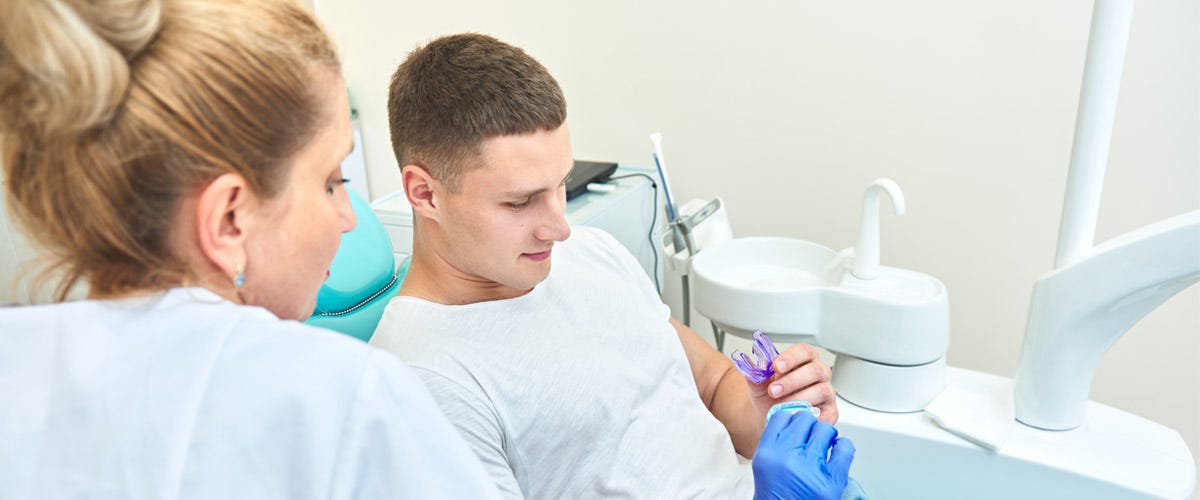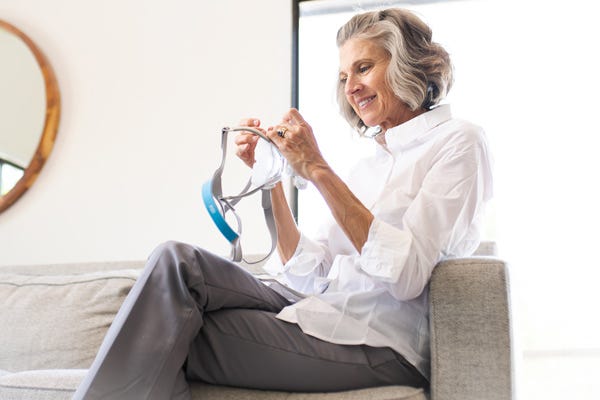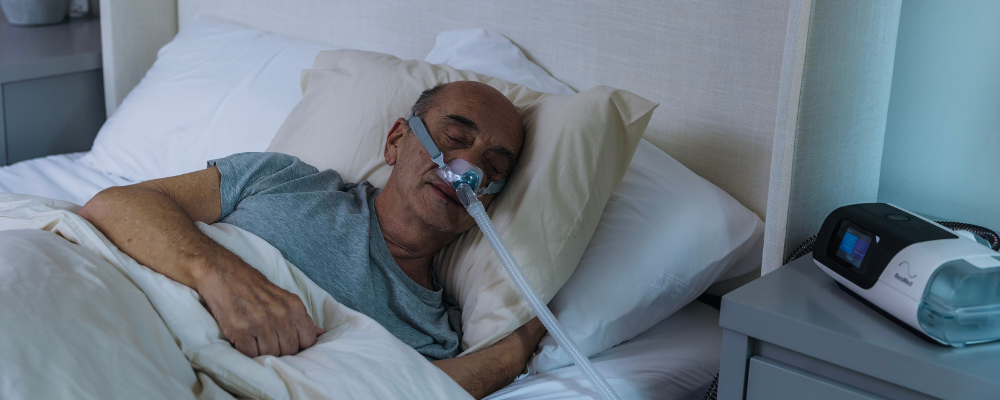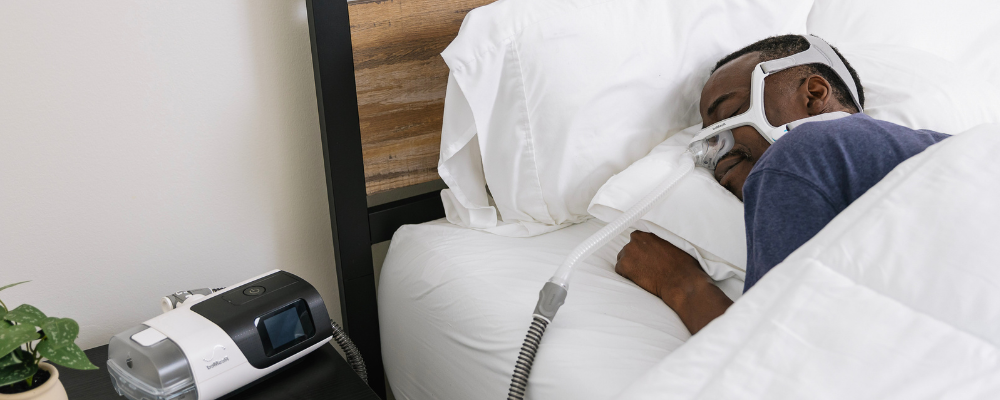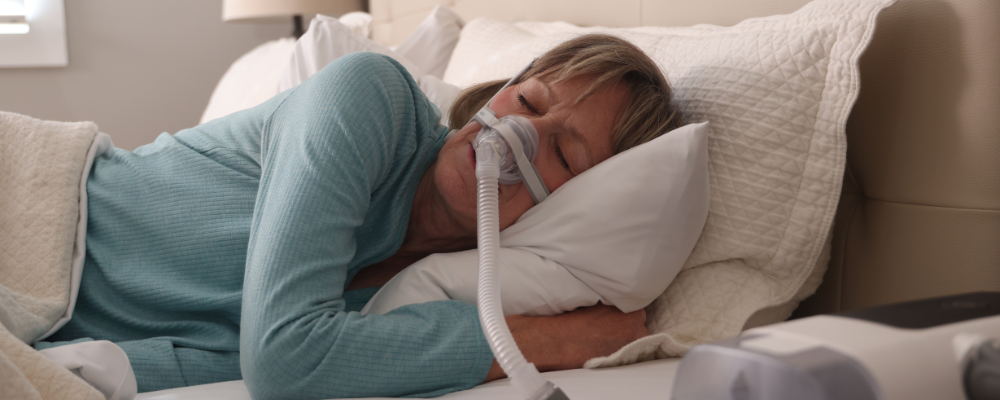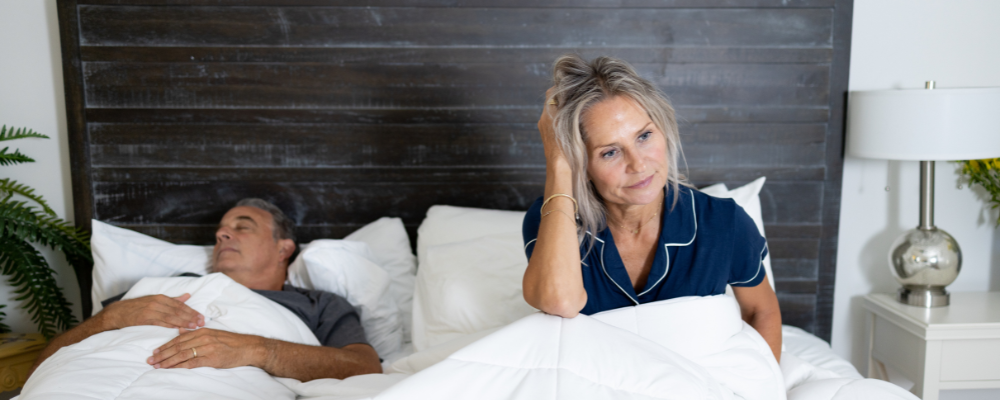If you have obstructive sleep apnea (OSA), you’ve probably heard of continuous positive airway pressure (CPAP) as a treatment option at some point over the course of your diagnosis.
While CPAP is the most popular treatment option, some individuals may experience difficulty tolerating it. But what other options are there? To provide you with more information, today we’re exploring 5 alternatives to CPAP machines.
In This Article:
Is There Maskless CPAP Therapy?
What Non-CPAP Treatments Are Available For Sleep Apnea?
Are There Any Surgical Options For Treating Sleep Apnea Other Than CPAP?
CPAP Alternatives Through Insurance
PAP Therapy Through Insurance:
Aeroflow Sleep is in-network with most primary insurance companies and is accredited by Medicare and Medicaid. Complete our Qualify Through Insurance Form, and we will automatically check to see if your plan covers CPAP supplies; including a machine, mask, and accessories. ***Must have a sleep study to qualify.***
You will also receive the care and attention every sleep apnea patient deserves; one-on-one clinical support in-home or via telehealth, a dedicated Sleep Specialist you can contact during business hours, and a user-friendly online portal with a tailored replacement schedule, important updates and notifications, and educational resources.
Let us take the headache out of healthcare. Join the Aeroflow Sleep family today! It only takes 5-7 minutes to get started.
How Does A CPAP Machine Work?
Put simply, a CPAP machine delivers pressurized air to the upper airways through an attached tube and a CPAP mask. The pressurized air helps keep the upper airway open while sleeping, which can be an effective treatment for all types of sleep apnea, including: obstructive sleep apnea, central sleep apnea, and mixed sleep apnea.
CPAP helps stabilize your breathing and improve your overall sleep quality, which is why many sleep medicine professionals consider it to be the “gold standard,” when it comes to sleep apnea treatment.
Is There Maskless CPAP Therapy?
No, you cannot use a CPAP machine without a mask. However, CPAP mask designs have come a long way; most modern CPAP masks offer a minimal design and are created with your comfort in mind. A timely example of this is Fisher & Paykel’s newest Solo Nasal CPAP Mask, which seals just under the nose and offers light, minimal headgear.
What Non-CPAP Treatments Are Available For Sleep Apnea?
There are several alternative treatments to CPAP therapy; however, it’s important to seek advice from your doctor first on which option may be best for you:
-
Other Forms of PAP Therapy (APAP, BiPAP, or EPAP): If you are having difficulty tolerating traditional CPAP therapy, your sleep specialist may recommend trying a different type of PAP therapy to maximize your comfort. Automatic positive airway pressure (APAP), bilevel positive airway pressure (BiPAP), or expiratory positive airway pressure (EPAP), may be able to uniquely meet your needs and provide a different PAP experience. These devices work similarly to a CPAP, but they vary in pressure capabilities and they can offer additional comfort settings.
-
Oral appliance therapy (or OAT): This alternative is a dental device, or mouth guard, that is worn while sleeping to help keep the airways open. An oral appliance works by pushing the tongue forward to create more space in the back of the throat. The two most popular types of oral appliances for sleep apnea are mandibular advancement devices and tongue-retaining devices. If you are interested in learning more about oral appliance therapy, reach out to your healthcare provider or dentist to learn more.
-
Positional therapy: This intervention can help treat mild to moderate positional sleep apnea (POSA), which is a type of obstructive sleep apnea where an individual’s sleep apnea worsens when they sleep on their back and improves when they sleep on their side. Positional therapy works to ensure that you maintain a side sleeping position throughout the night. Some forms of positional therapy include placing a tennis ball on the back to prevent rolling over, special pillows, or alarms that gently vibrate when you try to roll over.
-
Weight loss: Lifestyle changes, like weight loss, may help reduce the severity of OSA symptoms like daytime sleepiness, high blood pressure, and risk of heart attack. It may also reduce the severity enough to make you a candidate for an alternative treatment. While it’s true that excess weight and obesity can make sleep apnea symptoms worse, for those with moderate to severe obstructive sleep apnea, lowering your body mass index (BMI) likely won’t be enough to completely treat your sleep apnea.
-
Surgical treatment: This is typically only an option after other treatment options have failed. The type of surgery can depend on the patient’s overall health and how severe their sleep apnea is. Check out the next section for a more detailed overview.
Are There Any Surgical Options For Treating Sleep Apnea Other Than CPAP?
While your healthcare provider will likely recommend trying several less invasive sleep apnea treatments before discussing surgery, there are several surgery options that may be available to you:
-
Uvulopalatopharyngoplasty (or UPPP): While this word may look frightening, UPPP is a common obstructive sleep apnea surgery that involves removing the uvula, tonsils, and trimming the soft palate to widen the airway.
-
Genioglossus Advancement: This is a surgical procedure where the lower jaw and the tongue muscle attached to it are repositioned and moved forward to prevent airway obstruction.
-
Maxillomandibular Advancement: In some OSA patients, shortened jawbones can contribute to airway blockage. In this surgical procedure, your upper jaw (or maxilla) and lower jaw (or mandible) are lengthened to help keep the airway open while sleeping.
-
Hypoglossal Nerve Stimulation (or HGNS): This is a treatment for obstructive sleep apnea where a small device is implanted during a surgical procedure. This small device delivers a mild electric pulse to stimulate the nerve that controls the tongue muscles. While there are now a few different HGNS devices available, you may hear them referred to as “Inspire” after the first FDA-approved implant.
-
Tonsillectomy or Adenoidectomy: Sometimes the tonsils and adenoids can become enlarged enough to block your upper airways and contribute to sleep apnea. When this happens, it’s often recommended that they are removed. However, these surgeries tend to be more common in children who suffer from OSA, rather than adults.
CPAP Alternatives Through Insurance
If CPAP therapy doesn’t work for you, do not get discouraged! If you are having difficulty adjusting to CPAP, your sleep specialist can help. Talk to your doctor to determine which treatment option is the best for you!
References
Pavwoski, Patrick, and Anita Valanju Shelgikar. “Treatment Options for Obstructive Sleep Apnea.” Neurology Clinical Practice, U.S. National Library of Medicine, Feb. 2017,www.ncbi.nlm.nih.gov/pmc/articles/PMC5964869/#:~:text=Continuous%20positive%20airway%20pressure%20(CPAP,pressure%20via%20a%20mask%20interface.


